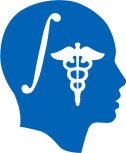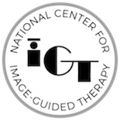RSNA 2017

|

|

|
RSNA Annual Meeting official web site
The events attended by SPL/NA-MIC representatives are listed in the calendar below.
Public Google calendar link: https://calendar.google.com/calendar/embed?src=og13rkhv7n81jlljn44c5j9dn8%40group.calendar.google.com&ctz=America/New_York%22
Program events
The following events will be presented at the 103rd Annual Meeting of the Radiological Society of North America (RSNA 2017)
3D Slicer: an open-source software platform for segmentation, registration, quantitative imaging and 3D visualization of multi-modal imaging data
3D Slicer is an open-source software platform for medical image analysis and 3D visualization used in clinical research worldwide. The application provides clinical researchers easy access to over 350 modules and extensions that can be run on their Windows, Mac or Linux laptop computer with their own data. 3D slicer provides functionalities for segmentation, registration, automated measurements, quantitative imaging, DICOM interoperability and structured reporting as well as other utilities such as tool tracking and real-time data fusion for image-guided therapy. The platform integrates quantitative image analysis in the imaging workflow and facilitates the translation of innovative algorithms into clinical research tools. 3D Slicer is supported by a multi-institution effort of several NIH-funded consortia, which include the Neuroimage Analysis Center (NAC), the National Center for Image Guided Therapy (NCIGT), and the Quantitative Image Informatics for Cancer Research (QIICR). Funding from several other countries contributes to some aspects of the platform. Over the past 13 years, more than 3,600 clinicians and scientists have attended 3D Slicer training workshops worldwide. Since its release at RSNA 2011, the latest version of the software 3D Slicer version 4 has been downloaded over a quarter million times.
Teaching Faculty
- Sonia Pujol, PhD, Surgical Planning Laboratory, Harvard Medical School, Department of Radiology, Brigham and Women’s Hospital, Boston MA.
- Steve Pieper, PhD, Isomics Inc.
- Andrey Fedorov, PhD, Surgical Planning Laboratory, Harvard Medical School, Department of Radiology, Brigham and Women’s Hospital, Boston MA.
- Ron Kikinis, MD, Surgical Planning Laboratory, Harvard Medical School, Department of Radiology, Brigham and Women’s Hospital, Boston MA.
Logistics
- Date: Sunday November 26 -Friday December 1, 8:00am-5:00pm
- Meet-the-expert session: Sunday November 26, 12:30pm-1:30pm; Monday, November 27 to Thursday, November 30, 12:15-1:15pm
- Location: Lakeside Learning Center, McCormick Conference Center, Chicago, IL
DICOM4QI demonstration and connectathon: Structured communication of quantitative image analysis results using the DICOM standard
Accurate and unambiguous communication of derived image-related information is critical for the emerging applications of quantitative imaging (QI), such as disease burden assessment, evaluation of treatment response and image-guided therapy. Digital Imaging and Communications in Medicine (DICOM) is the standard supported ubiquitously by commercial imaging devices. DICOM defines both communication interfaces and data formats for images and image-related information (including measurements, regions of interest (ROIs) and segmentations).
While a variety of DICOM object classes exist for describing derived image-related information, thus far they have found very limited acceptance both in the academic community and among the manufacturers of radiology workstations implementing QI analysis methods. As a result, longitudinal tracking, comparison of methods, and secondary analyses are challenging, while applying QI for analyzing patient image data is difficult or impossible to perform across different platforms.
DICOM4QI is a collaborative demonstration and connectathon with the goal of increasing adoption of DICOM in communicating QI analysis results in a structured and interoperable manner.
Handouts:
- Fedorov A, Clunie D, Ulrich E, Bauer C, Wahle A, Brown B, Onken M, Riesmeier J, Pieper S, Kikinis R, Buatti J, Beichel RR. (2016) DICOM for quantitative imaging biomarker development: a standards based approach to sharing clinical data and structured PET/CT analysis results in head and neck cancer research. PeerJ 4:e2057 https://doi.org/10.7717/peerj.2057
- Herz C, Fillion-Robin J-C, Onken M, Riesmeier J, Lasso A, Pinter C, Fichtinger G, Pieper S, Clunie D, Kikinis R, Fedorov A. dcmqi: An Open Source Library for Standardized Communication of Quantitative Image Analysis Results Using DICOM. Cancer Research. 2017;77(21):e87–e90 http://cancerres.aacrjournals.org/content/77/21/e87.
See details on the DICOM4QI web site: https://qiicr.gitbooks.io/dicom4qi
Logistics
- Date: Sunday November 26 -Friday December 1, 8:00am-5:00pm
- Meet-the-expert session: Monday November 27 to Wednesday November 29, 12:15pm-1:15pm
- Location: Lakeside Learning Center, McCormick Conference Center, Chicago, IL
Participants/Organizers
Andrey Fedorov, Lauren J. O’Donnell, Daniel Rubin, David Clunie, David Flade, Marco Nolden, Chris Hafey, Erik Ziegler, Paul Wighton, Dirk Smeets, James Reuss, Jayashree Kalpathy-Cramer, Justin Kirby, Christian Herz, Isaiah Norton, Michael Onken, Jörg Riesmeier, Gordon Harris, Steve Pieper, Ron Kikinis
3D Printing Hands-on with Open Source Software: Introduction (Hands-on)
“3D printing” refers to fabrication of a physical object from a digital file with layer-by-layer deposition instead of conventional machining, and allows for creation of complex geometries, including anatomical objects derived from medical scans. 3D printing is increasingly used in medicine for surgical planning, education, and device testing. The purpose of this hands-on course is to teach the learner to convert a standard Digital Imaging and Communications in Medicine (DICOM) data set from a medical scan into a physical 3D printed model through a series of simple steps using free and open-source software. Basic methods of 3D printing will be reviewed. Initial steps include viewing and segmenting the imaging scan with 3D Slicer, an open-source software package. The anatomy will then be exported into stereolithography (STL) file format, the standard engineering format that 3D printers use. Then, further editing and manipulation such as smoothing, cutting, and applying text will be demonstrated using MeshMixer and Blender, both free software programs. Methods described will work with Windows, Macintosh, and Linux computers. The learner will be given access to comprehensive resources for self-study before and after the meeting, including an extensive training manual and online video tutorials.
Teaching Faculty
- Michael W. Itagaki, MD, MBA Seattle, WA
- Beth A. Ripley, MD, PhD Seattle, WA
- Tatiana Kelil, MD, San Francisco, CA
- Carissa White, MD, Los Angeles, CA
- Anish Ghodadra, MD, Pittsburgh, PA
- Dmitry Levin, Seattle, WA
- Steve D. Pieper, PhD, Cambridge, MA
Logistics
- Dates
- Sunday November 26, 8:30am-10:00am, RCA21
- Monday November 27, 8:30am-10:00am, RCA21
- Wednesday November 29, 8:30am-10:00am, RCA41 (Advanced topics)
- Location: All sessions in S401AB
Radiomics Mini-Course: Informatics Tools and Databases
Quantitative imaging holds tremendous but largely unrealized potential for objective characterization of disease and response to therapy. Quantitative imaging and analysis methods are actively researched by the community. Certain quantitation techniques are gradually becoming available both in the commercial products and clinical research platforms. As new quantitation tools are being introduced, tasks such as their integration into the clinical or research enterprise environment, comparison with similar existing tools and reproducible validation are becoming of critical importance. Such tasks require that the analysis tools provide the capability to communicate the analysis results using open and interoperable mechanisms. The use of open standards is also of utmost importance for building aggregate community repositories and data mining of the analysis results. The goal of this talk is to improve the understanding of the interoperability, as applied to quantitative image analysis, with the focus on clinical research applications.
Teaching Faculty
- Jayashree Kalpathy-Cramer, MS, PhD
- Justin Kirby, PhD
- Andriy Fedorov, PhD, Surgical Planning Laboratory, Harvard Medical School, Department of Radiology, Brigham and Women’s Hospital, Boston MA.
Logistics
- Date: Tuesday November 28, 4:30pm-6:00pm | RC425
- Location: S103CD
